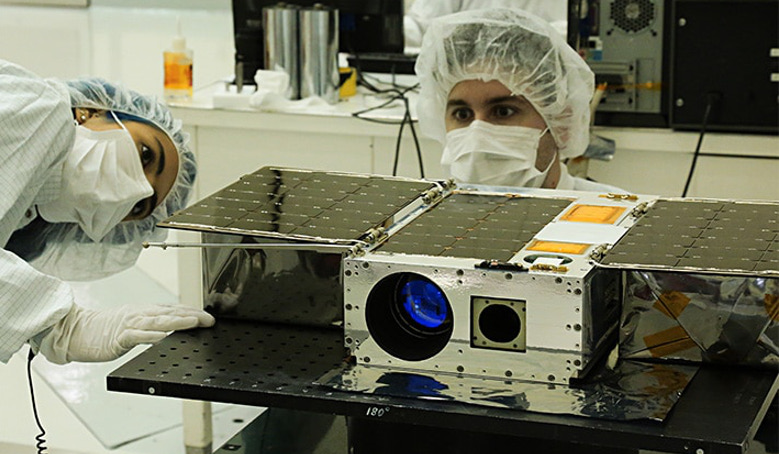NASA’s TESS mission might have stolen all of the headlines recently in it’s quest to find more exoplanets, but another mission from NASA has recently shown that you don’t need to be big and burly to reap the same rewards.
Called ASTERIA, or the Arcsecond Space Telescope Enabling Research in Astrophysics, this new CubeSat satellite that has been circling the Earth for more than a 140 days, weighs only 10 kilograms (22 pounds) and is only slightly larger than a box of cereal. It carries a payload for measuring the brightness of stars, and works similar to TESS by allowing researchers to monitor the brief drop in brightness of nearby stars, when a transiting exoplanet blocks out the starlight as it passes in front of its host star.
The mission objective was to test whether the miniaturised technologies it carried on board could operate in space as expected, and it passed with flying colours. This marks the success of one of the world's first astrophysics CubeSat missions, and demonstrates that small, low-cost satellites could be used to assist in future studies of the Solar System and beyond.
"ASTERIA is small but mighty," said Mission Manager Matthew W. Smith of JPL. "Packing the capabilities of a much larger spacecraft into a small footprint was a challenge, but in the end we demonstrated cutting-edge performance for a system this size."
A key requirement for studying exoplanets via the transit method, is the ability to precisely measure the star’s light. This requires a certain amount of time and a way to keep pointing at an object without losing focus on the target despite being pulled off course by external forces, such as Earth's atmosphere and magnetic field.
ASTERIA showed that despite its diminutive payload, it was capable of pointing at the same target for a period of 20 minutes and over multiple orbits around the Earth. The CubeSat also demonstrated that it was capable of reducing "noise" in the data created by temperature fluctuations in the satellite. Noise is a big problem in astronomical data as it can skew results and mask the legitimate signals of whatever it is you are looking at.
By showing that ASTERIA can perform as well as its bigger cousins, it opens the door for other potential uses of CubeSats, such as studying star systems that have planets with long orbits which need lengthy periods of observation time. Or, they could be used to study certain star systems that are not within the field of view of larger observatories. Or both.
Their uses could be limitless. “We're continuing to characterise CubeSat components that other missions are using or want to use," said Amanda Donner, mission assurance manager for ASTERIA at JPL.
One such other mission is NASA’s next robotic lander – InSight – which is heading for Mars next month. As InSight cruises along to the red planet, it will be joined on its journey by two CubeSats called Mars Cube One, or MarCO for short. These two will also be testing key technologies in CubeSat technology, this time beyond Earth orbit, while relaying data about InSight as it enters the Martian atmosphere and lands (although they are not crucial to the InSight mission, should they fail to reach their intended destination)
"These are our scouts," said Andy Klesh of JPL, MarCO's chief engineer. "CubeSats haven't had to survive the intense radiation of a trip to deep space before, or use propulsion to point their way towards Mars. We hope to blaze that trail."
With the prospect of building something that could potentially reach other planets in just a matter of years rather than decades, the future of deep space missions is looking decidedly small…











